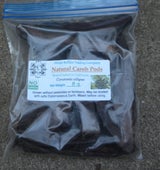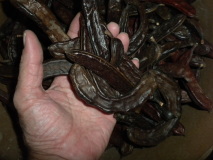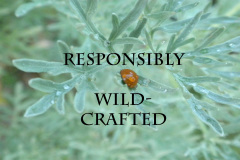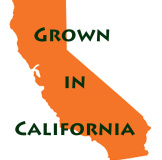- Store
- >
- Carob; Pods, Seeds & Roasted Powder
- >
- Carob Pods, Whole, Wild-crafted, Ceratonia siliqua, 4 sizes
Carob Pods, Whole, Wild-crafted, Ceratonia siliqua, 4 sizes
SKU:
$4.95
4.95
29.95
$4.95 - $29.95
Unavailable
per item
Natural edible carob pods, each containing seeds, from several different trees. Wash before using. California grown. Whole pods, not broken, not chewed on, no spider webs or mold, no soft black ends, should have no defects. Pods range from about three inches to over eight inches long. Picked once a year in fall.
Another sacred tree with a category under Plant Lore.
AKA Locust bean. Saint Johns bread.
Another sacred tree with a category under Plant Lore.
AKA Locust bean. Saint Johns bread.
The Carob Tree thrives in challenging environments with little or no care whatsoever. Frost and drought tolerant, but likely won't survive into Canada. Pretty round leaves with a reddish tint to the branches. Prefers a dry, mild Mediterranean climate such as Italy, Spain, Texas, California, etc., but very tolerant of other climates once established. Beautiful ornamental tree with long brown seed pods that develop from Spring flowers. 30 seeds minimum, assorted.
The pods of the Carob Tree contain galactomannon, a commercially valuable carbohydrate that is used as a thickener, emulsifier and stabilizer in many products. The seeds are extremely hard and durable.
Some carob facts:
The pods of the Carob Tree contain galactomannon, a commercially valuable carbohydrate that is used as a thickener, emulsifier and stabilizer in many products. The seeds are extremely hard and durable.
Some carob facts:
- Carob tree has a very deep tap root and can live in areas with low or infrequent rainfall. It does not do well in wet, soggy, poorly drained soil. During a drought, the tree can still produce edible fruit. Its fruit can be a valuable famine food for both people and animals. In Biblical times, animals were fed carob pods in times of famine.
- Carob can live in a wide range of temperatures: from 20 to 122 degrees F (-6 to 50 degrees C).
- Carob grows well in poor, salt-rich, rocky, sandy and/or heavy loam soils.
- Carob Pods, sans seeds, are roasted and ground into carob powder, then used as a chocolate substitute in baked goods and candies.
- The Carob Tree is a member of the Pea Family (Leguminosae or Fabaceae). A few of its many family members are sweet peas, peanuts, soy beans and garden peas.
- Although originally from the Middle East or the Horn of Arabia, the Carob Tree will grow wherever the soil and climate are suitable. It now grows abundantly in Australia, California, Arizona, Mexico, South America, Spain, Portugal, France, Italy and much of Africa.
- The Carob Tree is an evergreen that grows to a height of about 50 to 60 feet (15 to 17 meters).
- The Carob Tree begins to produce fruit when it is six to 15 years old. It can live and produce fruit until it is 100 years old.
- Unlike many other members of its family, it does not have colorful big flowers. It has very tiny flowers on a stalk that is attached directly to the trunk and limbs of the tree. The flowers take almost a year to develop into a semi-sweet, chocolate colored pod. The carob seed pods measure four to 12 inches long, with an average length of about six inches, right ladies? The shorter pods seem to be fatter. Considered edible, but some people don't like them.
- The Carob Tree grows wild but it can also be farmed commercially. It is planted as a landscape plant in many cities in California, where it receives no care for watering, pruning, seed picking, or spraying.
- The Carob Tree requires little or no pruning and can produce fruit without fertilization or irrigation in most environments.
- The Carob Tree is virtually pest free. Animals, especially mammals and birds, eat its nutritious pods, which can contain up to 25% protein. This helps spread and release its seeds.
- The pods are hard from start to finish. Even the immature, green pods are solid.







